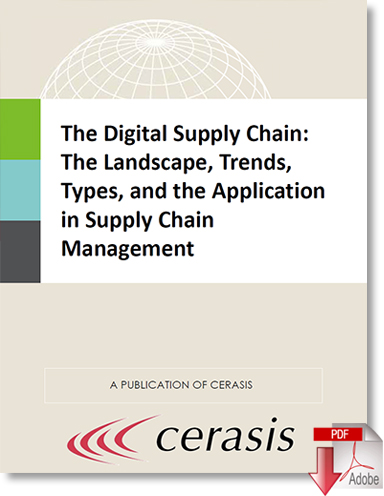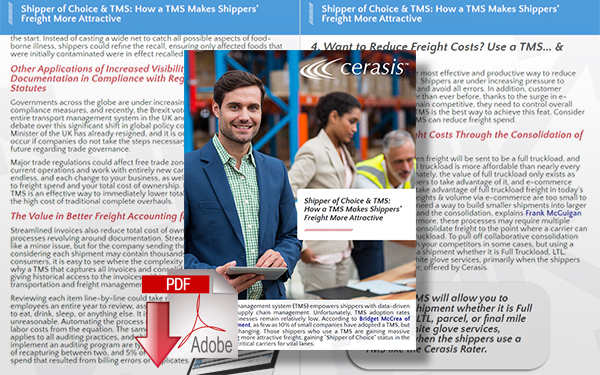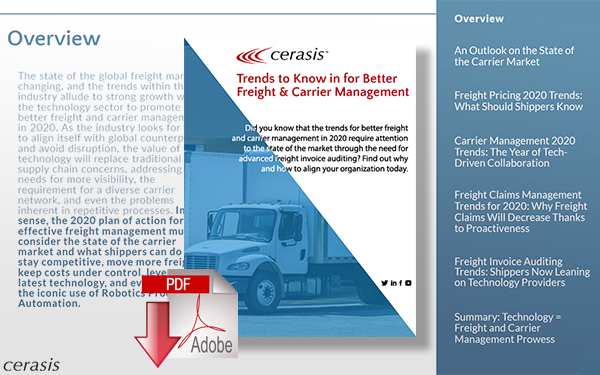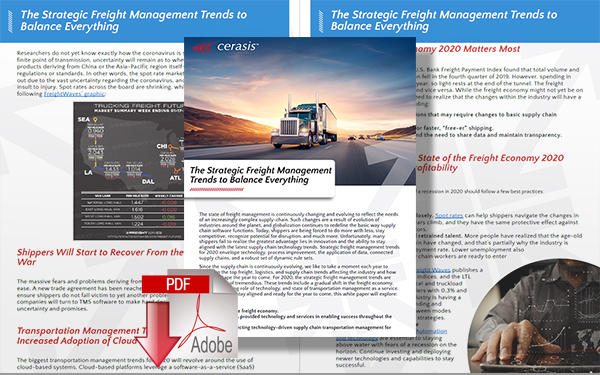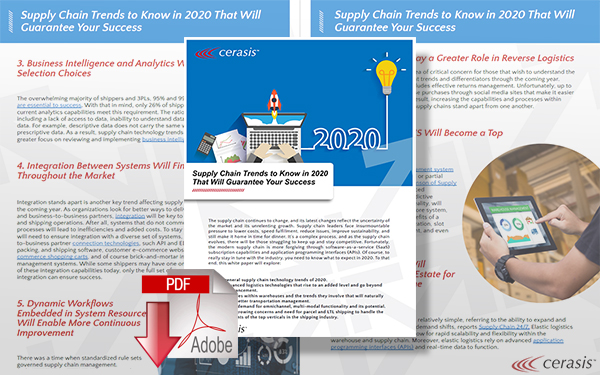10 Metrics to Track and Manage Risk in the Global Supply Chain

In today's COVID-19 pandemic environment, figuring out the best way to manage risk is on the minds of shippers and top supply chain leaders, and moreover, the frequency of major disruptions and risks is increasing, especially on the geopolitical front.
Vital Supply Chain Information
Under the current COVID-19 global pandemic, managing risk in the supply chain has taken on a renewed importance.
Procurement teams continue to struggle with finding available suppliers and shipping capacity to enable supply chain responsiveness.
According to the Harvard Business Review, “vital information is often not available or accessible across their global teams, as a result, their response to the disruption has been reactive and uncoordinated, and the impact of the crisis is hitting many of their companies' full force.”
The vital information in question has another name - logistics metrics that enable better management of risk in the supply chain.
Shippers need to understand the top metrics to track and manage risk through current and future disruptions.
Top 10 Metrics to Track and Manage Risk
1. General Carrier Performance Amid Risk in the Supply Chain
The first metric is really a combination of multiple metrics that form the carrier performance scorecard.
Carrier adherence to on-time delivery, carrier delays, the average length of delays, and total carrier costs averaged per shipment are essential metrics to maintaining a positive relationship throughout the disruption.
2. Percent of Carriers With Lower-Than-Average Capacity Following Disruption
Maintaining adequate control over inventory remains a problem for modern supply-chain managers. When risks materialize, inventory may be subject to instances of panic buying, a run on necessities, and other external factors.
As a result, more companies reorder products to make up for demand.
Carriers will experience a decline in available capacity due to an increased volume of total freight shipped. However, prolonged disruptions, such as the novel coronavirus disruption, will inevitably cause a demand shock, leading to a drastic reduction in available shipped rate and higher rates. At the onset of any crisis, supply chain leaders must begin tracking the percent of carriers with declines in available capacity to stay informed of the overall health of carrier performance.
3. Percent of Carriers With Available, Mode-Specific Capacity
It is not enough to simply track carriers affected by limited capacity during a disruption. Shippers must track the percent of carriers with available capacity across specific modes. Remember that understanding availability of capacity within modes is essential to taking advantage of multimodal transportation options and alleviating higher freight rates.
While preliminary reports regarding the performance of the industry for April 2020 are still in the works, the severe disruptions within the industry allude to a sudden spike on truckload freight rates.
4. Total Cost in USD for Inability to Procure Supplies
Another critical metric to track in managing risk in the supply chain is the total landed cost for all procurement processes.
During a disruption, total landed costs will increase as more activities may be necessary to secure supplies. It is a simple concept; more work on the part of individual shippers and carriers to move freight and meet the demands of disruption will inevitably lead to higher labor costs.
5. Number of Available Backup Suppliers for Fastest-Moving Products
Suppliers will also see a change in the fastest-moving SKUs. Take the example of cleaning supplies under the current situation. As SKUs began to fly off shelves, shippers had to immediately look for alternative suppliers. Tracking the total number of alternate suppliers with the available products for fastest-moving items is a critical component of successful risk management and mitigation strategy.
Moreover, shippers should also track the difference in cost per SKU when working with a given supplier, changes in the shipping timeline, and opportunities to avoid unnecessary expenses in the shipping thereof.
6. Percent Compliance With the Inbound Freight Routing Guide
Maintaining compliance with the inbound freight routing guide should be a year-round metric, and its importance grows during times of disruption. Failure to comply with the inbound freight routing guide will lead to added detention charges and longer dwell times for truckers at your facilities.
Furthermore, shippers lose control over the inbound freight process when the workflows and rule sets within the routing guide go out the proverbial window. As a result, shippers should maintain a specific metric on the percent compliance for all carriers with the inbound routing guide, as well as the percent of compliance for each carrier, supplier, or other vendor engaging in the supply chain.
As compliance moves further away from 100%, shippers should begin to enforce penalties, including refusal to pay assessed charges, to combat the problem and ensure smooth freight management.
7. Total Revenue Lost During Current Disruption
While it is disheartening to track the total lost revenue deriving from disruption, it is essential. Recognizing the fiscal impact of a disruption provides a founding stone for building the business case for better, more efficient risk management strategies and transportation management capabilities to prevent future disruption in your supply chain.
Also, it is easier to quantify this cost in terms of total lost revenue on average by carrier, customer, and other supply chain partners.
8. Percentage of Unrelated Risks Coming to Maturity During Another Crisis
Proactively managing unrelated risks as during a major disruption is a highly subjective task. Supply chain leaders already have their plates full, and they must also consider the likelihood of other risks impacting the supply chain during a current disruption.
For example, the continuance of the disruptions of COVID-19 could conceivably continue into hurricane season. The forecast for the upcoming 2020 hurricane season indicates a minimum of four major storms and more than a dozen named tropical storms.
As a result, companies should review all available data for other risks, such as mergers and acquisitions, whether -related risks, political changes, and global trade disruptions for a possible percentage of impact on current operations based on the most available data. The exact criteria for calculating this metric will also vary by facility.
Thus, it is best to approach it by assigning a risk index value to each possible risk, such as impact from a hurricane’s landfall to your current facility. As the forecast shrinks, shippers should intervene and take proactive steps to protect against the effects of these risks, and in retrospect, understanding the percent of risks that did come to fruition during another disruption will help supply chains identify their weaknesses and opportunities for improvement.
9. Percent of Accounts Receivables That Have Yet to Be Paid During the Crisis
Financial matters will come under the microscope during the crisis. Shippers should track the total number of late or missing payments within the accounting department that occur during a disruption. This metric provides insight into whether carriers are properly reimbursing your company for possible freight claims filings, the reversible of detention time charges, and more.
In addition, keeping this data intact may be necessary to gain access to available funding under relief legislation.
10. Dwell Time Costs Deriving From Failures Among Other Companies to Manage Transportation During Crises
Finally, the tenth most important metric to manage risk in the supply chain metric surrounds dwell time again. It is possible to dwell time to be assessed as a result of the failures of other companies. For instance, the tracker arrives two hours late, causing a cascading delay in the dock schedule. All subsequent drivers then begin to charge added fees for dwell time. These costs all traced back to the original problem, which was the first trucker’s late arrival.
Shippers can manage risk in the supply chain by isolating the original cause of all dwell time charges for a given duration and assessing those charges back to the original cause or carrier. It sounds harsh, but tracking these metrics will help isolate causes of higher costs from dwell time, as well as improve shipper and carrier relationships too.
Manage Risk Through Data and Continuous Evaluation of Metrics
There is not a one-size-fits-all approach to metrics to manage risk during a disruption. However, those that take the steps to safeguard procurement practices and enable smooth product flows can alleviate much of the risk.
In addition and according to the McKinsey & Company article “A practical approach to supply-chain risk management”;
“Leaders must clearly define and communicate an organization’s risk tolerance. Risk mitigation often has an associated incremental cost, and so it is important to align on which risks need to be mitigated and which can be borne by the organization. An organization’s culture should also allow for warning signs of both internal and external risks to be openly shared.”
Clearly, the best path forward lies in the continuous evaluation of both internal and external factors that may contribute to the next big disruption, and the aforementioned metrics can help your company judge those factors continuously.
About the Author
Kevin Jessop oversees the overall marketing strategy for Cerasis including website development, social media and content marketing, trade show marketing, email campaigns, and webinar marketing. Mr. Jessop works with the business development department to create messaging that attracts the right decision-makers, gaining inbound leads and increasing brand awareness all while shortening sales cycles, the time it takes to gain sales appointments and set proper sales and execution expectations.
Related Article: Don’t Just Map Out Your Supply Chain Geographically but Geopolitically Too!
Related Papers
How a TMS Makes Shippers’ Freight More Attractive
This is a must-read paper for shippers who are wanting to make sure they are working collaboratively with carriers to gain and maintain “Shipper of Choice” status by following not only best practices but optimizing those sound processes with the use of a TMS. Download Now!
2020 Trends for Better Freight & Carrier Management
In this white paper, we discuss how technology - advanced, automation capabilities and system functions - provides a protective effect and enables better freight and carrier management. Download Now!
2020 Strategic Freight Management Trends
In this educational and informative white paper, you will learn about the top freight, logistics, and supply chain trends affecting the industry and how they will shape the year to come. Download Now!
Supply Chain Trends to Know in 2020
This educational and informative white paper details how everyone needs more technology and functionality to offer faster purchase-to-door-shipping, regardless of channel or order origin, the question is, are you and your company up for the challenge and can you guarantee success? Download Now!
More Cerasis Resources
Article Topics
Cerasis News & Resources
GlobalTranz Appoints Executive Chairman Bob Farrell as Chief Executive Officer Amazon’s Drone Delivery Hits Milestone with Federal Aviation Administration Clearance Digital Supply Chain: The Landscape, Trends, Types, and the Application in Supply Chain Management Walmart’s Bid for TikTok Could Benefit the Retail Giant’s Ecommerce and Advertising Businesses The State of Ecommerce Logistics Heading into 2020 Peak Delivery Season Bringing Omnichannel to the Forefront of Ecommerce FedEx’s Fred Smith Optimistic About Economic Recovery as Ecommerce Business Booms More CerasisLatest in Supply Chain
Microsoft Unveils New AI Innovations For Warehouses Let’s Spend Five Minutes Talking About ... Malaysia Baltimore Bridge Collapse: Impact on Freight Navigating TIm Cook Says Apple Plans to Increase Investments in Vietnam Amazon Logistics’ Growth Shakes Up Shipping Industry in 2023 Spotlight Startup: Cart.com is Reimagining Logistics Walmart and Swisslog Expand Partnership with New Texas Facility More Supply Chain

